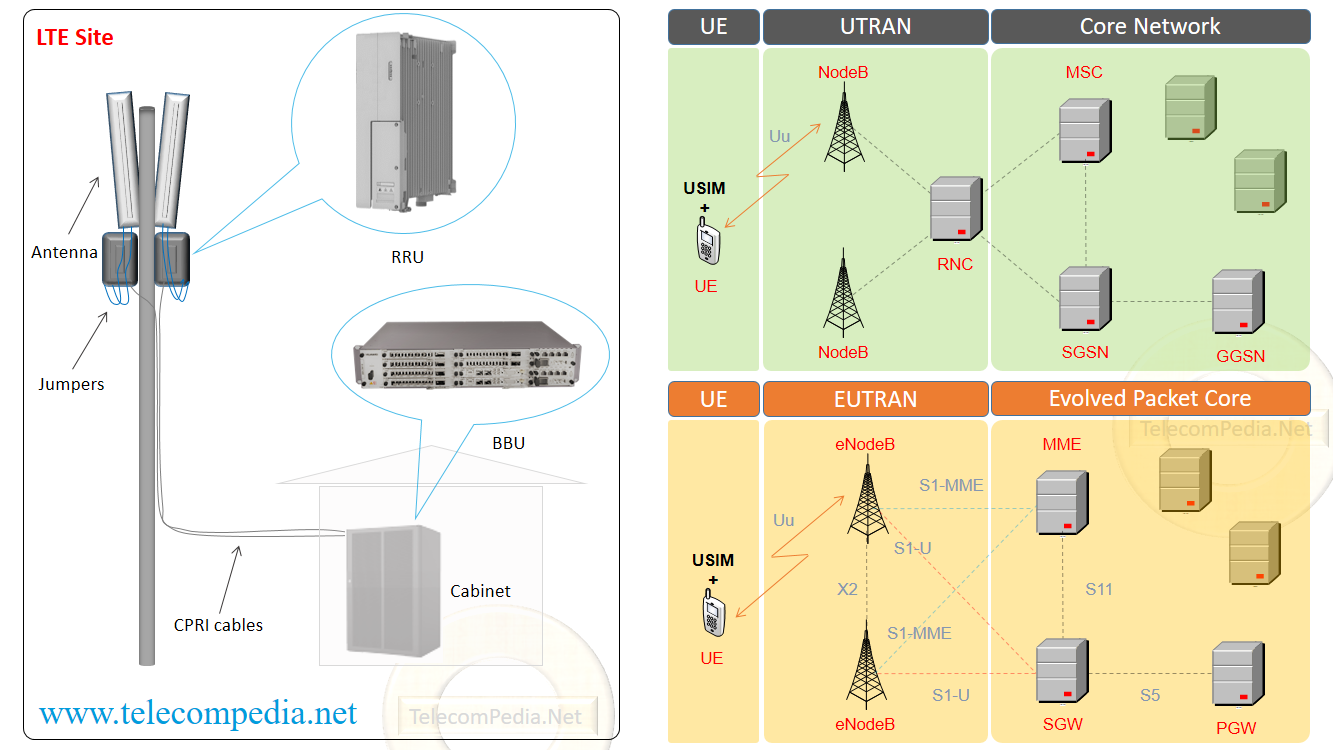Evolved NodeB or with abbreviated version eNodeB is a major part of LTE network structure. If we compare eNodeB with NodeB which is used in WCDMA network, there is a big difference between two nodes. Most of the main functionalities is obtained by RNC in UTRAN network, but in E-UTRAN network these responsibilities are under eNodeB. There is no common controller for eNodeB in LTE, each eNodeB is a controller for itself. eNodeB as base stations have to manage radio resources and mobility in the cell. eNodeB uses OFDMA (downlink) and SC-FDMA (uplink) on radio interface.
Network Interfaces
• eNodeB uses S1-MME interface with MME for control plane traffic.
• eNodeB uses S1-U interface with S-GW for user plane traffic.
• eNodeB uses X2 interface with other eNodeB elements.
• eNodeB uses Uu interface with user equipment (UE)
BBU: Base Band Unit, manages the entire base station system. The management involves uplink and downlink data processing, signaling processing, resource management, operation and maintenance.
RRU: Remote Radio Unit, is used to transmit and receive baseband signals, modulate and demodulate RF signals, process data, and amplify the power of signals.
CPRI: Common Public Radio Interface standard defines a flexible interface between BBU and RRU. The purpose of CPRI is to allow replacement of a copper or coax cable connection between a radio transceiver and a base station.
Jumper: RF jumper, transmits and receives RF signals. One part is connected to RRU and other end is connected to antenna system.
* Note: In the above picture, a simple LTE site was described (Antenna, Jumpers, CPRI, RRU, BBU and Cabinet).
